Additional specialist staff are in place ahead of the commencement of the forensic excavation of the site of the former Mother and Baby Institution in Tuam, Co Galway.
International experts from Colombia, Spain, the UK, Canada, Australia, and the US have joined Irish specialists to start the forensic excavation at the site of the former Mother and Baby Institution in Tuam, Co Galway.
The new appointments have been made by the Office of the Director of Authorised Intervention, Tuam (ODAIT) in preparation for the start of the full excavation of the site next week.
The ODAIT said on Monday that its multidisciplinary forensic approach to the complex challenge of the excavation is grounded in the expertise of forensic archaeologists, osteoarchaeologists, forensic anthropologists, together with experts in crime scene management, including evidence management and forensic photography.
Pre-excavation work has been ongoing since mid-June, when ODAIT took control of the site.
Speaking to the media at the Tuam site on Monday, Daniel MacSweeney, head of the ODAIT, acknowledged that there has been significant interest, both nationally and internationally, ever since amateur historian Catherine Corless published her research exposing the scandal over a decade ago.
Beside MacSweeney for the media briefing was Dr. Niamh McCullagh, who led the test excavation at the site in 2016 - 2017 that confirmed the presence of human remains from the era of the Mother and Baby Home institutions.
MacSweeney said: “We have reached an important new stage of this unique and incredibly complex excavation.
"It’s three weeks since we took control of the site, and significant progress has been made since then.
"We have recruited essential expert staff to the team, [and] preparation work at the site is ongoing to safeguard the integrity of the site and the sensitive nature of the work."
MacSweeney separately told RTÉ Radio's News at One on Monday: "The ultimate objective is to restore dignity."
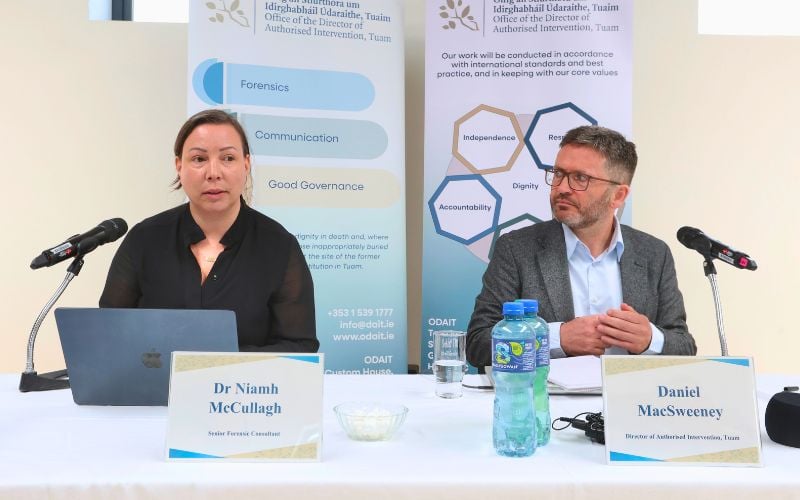
July 7, 2025: Dr. Niamh McCullagh and Daniel MacSweeney address the media. (RollingNews.ie)
On Tuesday, a visit for families and survivors to the perimeter of the site to view the works will take place, organised by ODAIT. The visit will be closed to the media.
"The most important event of the week is the Family and Survivors Day, encompassing a visit to the site and a meeting to keep them informed about the work that has taken place so far and about what will be taking place next," MacSweeney said.

July 7, 2025: Dublin woman Anna Corrigan, who believes her two brothers might be buried at the site, speaks to media in Tuam. (RollingNews.ie)
ODAIT has noted that for the duration of the works, strict controls on public, media, and photographers’ access to the site are in place.
This, the ODAIT says, is necessary to respect the sensitive nature of the excavation and recovery programme, respect survivors and family members, protect the integrity of the forensic examination, and respect the privacy and professionalism of staff and allow them to fully focus on carrying out the works.
MacSweeney said on Monday: "We continue to work closely with the residents living close to the site to ensure minimum disruption is caused to them by the works.”
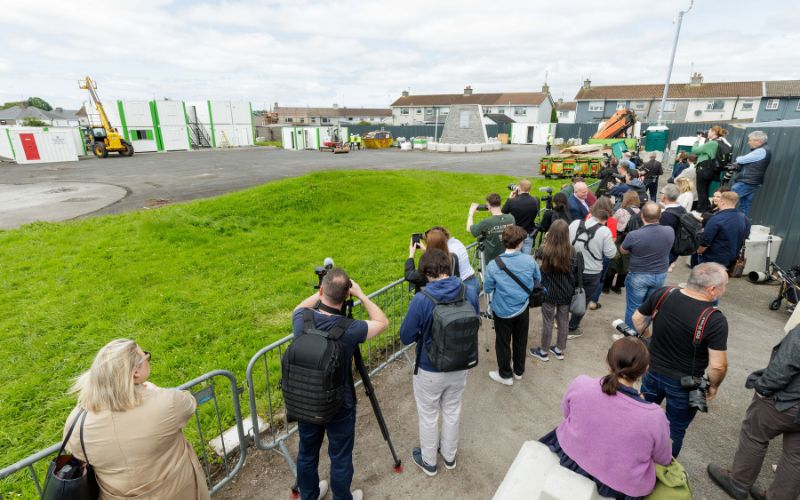
July 7, 2025: Media at the site of the former Tuam Mother & Baby Home in Co Galway ahead of the excavations.
About the Tuam Mother and Baby Home in Co Galway
The Tuam Mother and Baby Home was an institution for unmarried mothers and their children. Run by the Bon Secours Sisters, it operated from 1925 to 1961.
In 2014, local amateur historian Catherine Corless was researching the Tuam Home's history when she discovered records showing that 796 children had died at the Home, but burial records could not be found, sparking suspicion of a mass grave at the site.
“Significant quantities” of human remains were discovered at the site in 2016 and 2017.
In January 2021, nearly six years after the Mother and Baby Homes Commission of Investigation was launched, the Final Report of the Commission of Investigation into Mother and Baby Homes was published.
Including the Tuam Home, the Commission investigated 18 homes across Ireland, ultimately finding that "a total of about 9,000 children died in the institutions under investigation - about 15% of all the children who were in the institutions."
The report later states: "There is no single explanation for the appalling level of infant mortality in Irish mother and baby homes."
The report says that "a particular catalyst" for the formation of the investigative Commission "was the discovery by Catherine Corless of the possible burial arrangements for children who died in the Tuam Children’s Home."
Following the publication of the report, the Irish Government offered a formal apology to victims, survivors, and their relatives.
In November 2021, the Irish Government published its Action Plan for Survivors and Former Residents of Mother and Baby and County Home Institutions. Part of the plan was a commitment to "advance burials legislation to support the excavation, exhumation and, where possible, identification of remains, and their dignified reburial."
In July 2022, the Institutional Burials Act became law, allowing exhumations to take place at former Mother and Baby Homes across Ireland. The Irish Government established ODAIT as part of the Act that October, and in May 2023, Daniel MacSweeney was tasked with overseeing the excavations of children's remains at the site at Tuam.
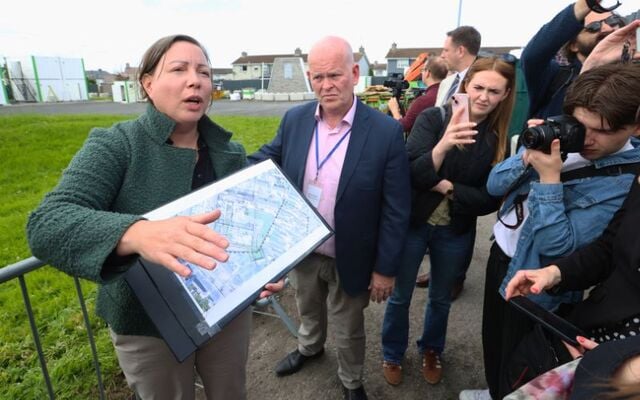
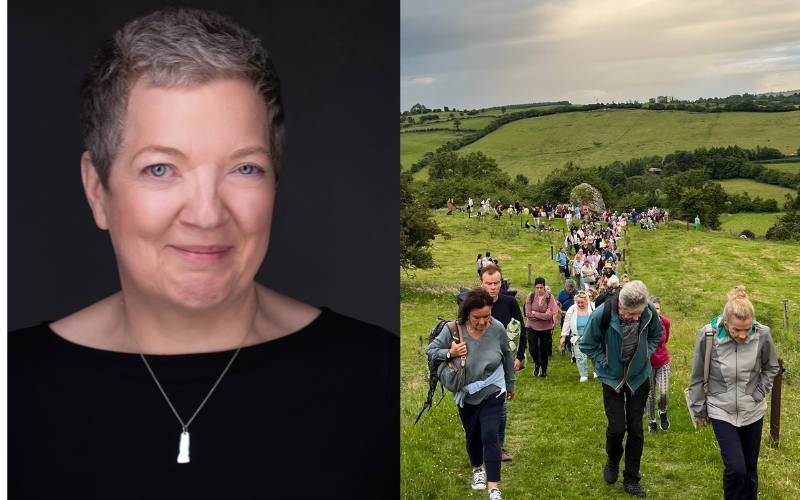

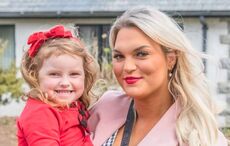
Comments